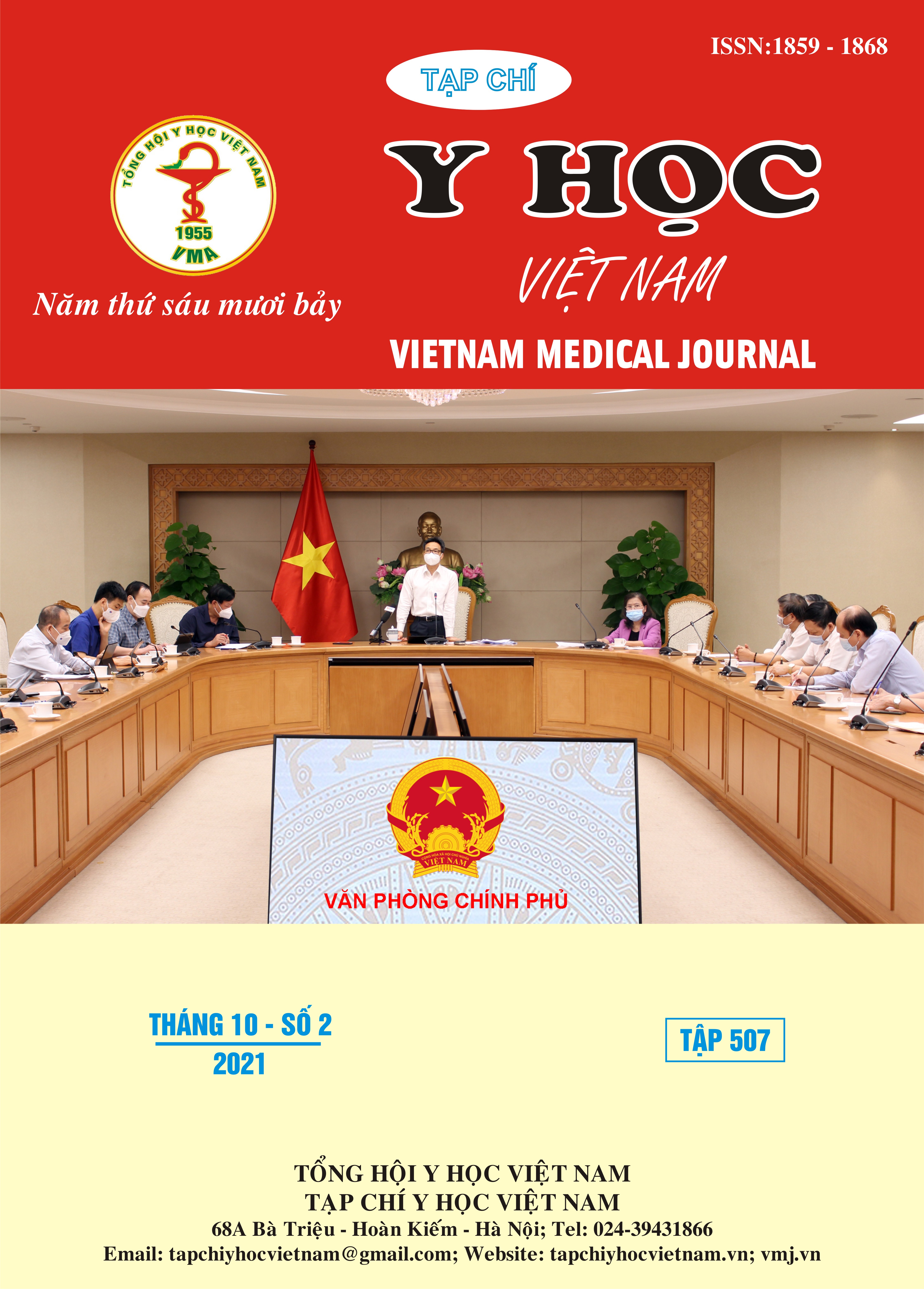TREATMENT OUTCOMES OF LOWER CERVICAL SPINE INJURY BY POSTERIOR APPROACH
Main Article Content
Abstract
Cross-sectional descriptive study based on 60 patients with lower cervical spine injury and neurological deficits operated at Vietduc Hospital .The objective was describing demographic characteristics, causes of fractures, first aid, patients’ transportation, some clinical features and treatment outcomes. The mean age was 52,92 +/- 14,84years. Most of the patients were male and 5/5 people of death is male. There was a statistically significant difference in the sex of patients living and dying. The percentage of patients with AIS A before surgery was 60 % and after surgery reduced to 6,7%. There was a statistically significant difference between the rate of sphincter muscle disorders at the time before and after surgery (p <0.05). And there was a statistically significant difference in the proportion of patients according to AIS classification between the two times before and after surgery (p <0.001). After 6 months, the percentage of patients surviving is over 90%.
Article Details
Keywords
Lower cervical spine injury, neurological deficit, posterior approach
References
2. J. Lohnert, J. Latal, M. Maly và cộng sự (1996). [Treatment of fractures of the lower cervical spine (C3-C7)]. Bratisl Lek Listy, 97(4), 216-219.
3. P. Leucht, K. Fischer, G. Muhr và cộng sự (2009). Epidemiology of traumatic spine fractures. Injury, 40(2), 166-172.
4. X. X. Yang, Z. Q. Huang, Z. H. Li và cộng sự (2017). Risk factors and the surgery affection of respiratory complication and its mortality after acute traumatic cervical spinal cord injury. Medicine (Baltimore), 96(36), e7887.
5. Y. Robinson, A. L. Robinson và C. Olerud (2015). Complications and survival after long posterior instrumentation of cervical and cervicothoracic fractures related to ankylosing spondylitis or diffuse idiopathic skeletal hyperostosis. Spine (Phila Pa 1976), 40(4), E227-233.
6. K. J. Song và K. B. Lee (2008). Anterior versus combined anterior and posterior fixation/fusion in the treatment of distraction-flexion injury in the lower cervical spine. J Clin Neurosci, 15(1), 36-42.
7. D. A. Taggard và V. C. Traynelis (2000). Management of cervical spinal fractures in ankylosing spondylitis with posterior fixation. Spine (Phila Pa 1976), 25(16), 2035-2039.
8. T. Liebscher, A. Niedeggen, B. Estel và cộng sự (2015). Airway complications in traumatic lower cervical spinal cord injury: A retrospective study. J Spinal Cord Med, 38(5), 607-614.
9. Y. Yukawa, F. Kato, K. Ito và cộng sự (2009). Placement and complications of cervical pedicle screws in 144 cervical trauma patients using pedicle axis view techniques by fluoroscope. Eur Spine J, 18(9), 1293-1299.


